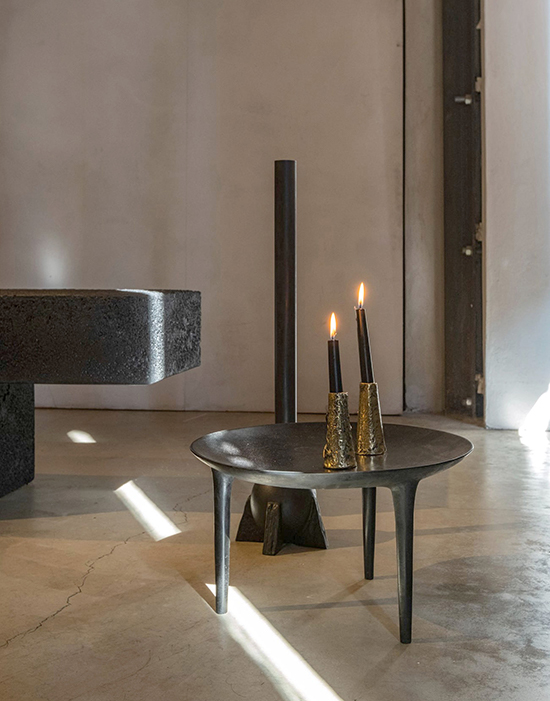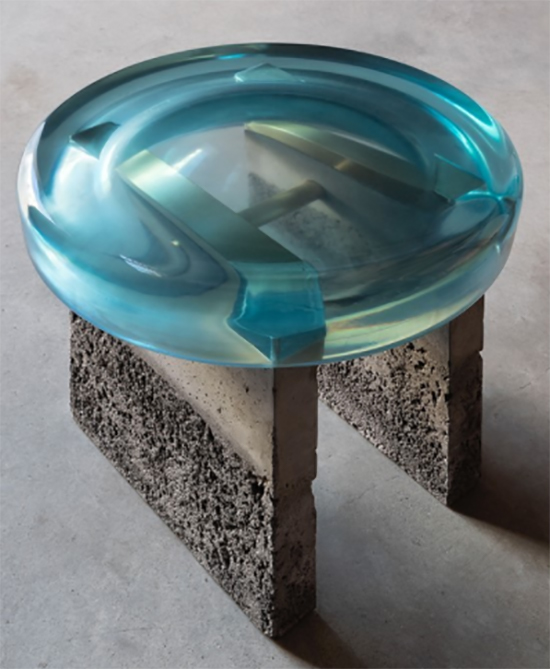A primal design dialogue with Rick Owens
With our world turning more digital than ever, particularly during the past two years, there has been a natural gravitation to the other end of the spectrum: the organic and the primal.
There is a longing for the raw and the natural, which satisfies the id or the instinctive component of the personality that has somehow been desensitized by our industrialized, digitized existence. Not surprisingly, this style is one of the major trends for design and interiors in 2022.
A recent exhibit in Milan at Galerie Philia explored these primal impulses through a dialogue between furniture pieces by the designer Rick Owens and a selection of Italian designers.

Owens may be better known for his fashion ensembles of aggressive silhouettes that are deliberately misaligned and deconstructed—an antithesis to conventional “pretty” clothes. Although he is hesitant to call it art, they have a sculptural quality that has afforded him an easy transition to designing furniture and objects.
My furniture is my couture. I’m using rare materials and artisans with specialized skills to create unique, one-of-a-kind objects.
His jump-off points for design, after all, are from architecture and contemporary art: Le Corbusier’s architectural brutalism, Carlo Scarpa’s research on the weight of anti-decorative structural elements, the irreverence of arte povera, Piero Manzoni’s monochromes and Brancusi’s sculptures.
Fascinated by the contrast created when different materials come together, he started his furniture line in 2007 when he imagined a rock covered in fur placed next to a fireplace, the seminal piece that defined the Boulder signature collection.

“My furniture is my couture,” Owens says. “I’m using rare materials and artisans with specialized skills to create unique, one-of-a-kind objects.”
Often described as brutalist—that austere, menacing style characterized by a certain crudity that emerged in the 20th century and became popular in the ’50s and ’60s—his pieces have inspired a new generation of Italian artists who also have a similar predilection for rawness and off-kilter fabrications, if a bit more “child-like.”

Galerie Philia’s co-founder Ygaël Attali observed that “among contemporary designers between 20 and 35 years old, 80 percent of them were inspired by Rick Owens.” He thinks this is because Owens’ pieces “have an aura. They don’t even try to be nice-looking, comfortable or appealing. They’re just there and if you like them, you like them.”
The designers were chosen because of their irreverent style and “to create this dialogue between Owens’ heaviness and power, and these airier, softer tonalities that Italian contemporary design can offer.”

An ethereal floating tree branch chandelier in brass by design duo Morghen provides lightness as a counterpoint against the geometric solidity of an oxidized steel table by dAM Atelier and Owens’ Square Alchemy chair, as well as vessels from his bronze series.

In another tableau, his bronze urns and bulbous bowls with triangular legs make a striking contrast against Lorenzo Bini’s gracefully biomorphic marble tables with grey veins that pick up from the oxidized objects. Positioned on onyx plinths by Pietro Franceschini, these vessels take on a more mystical quality, like precious offerings used in primeval rituals.

Primal need not be that serious, however. It can have a more humorous bent through neotonic pieces like Franceschini’s Urania marble chair, which elicits a smile despite the heaviness of the material used. Beside it is a delicate glass vase floating on a long metal rod like a flying kite secured by a jagged rock, by Agustina Bottoni known for her emotionally evocative and elegant glassware and other objects.

Another neotonic piece is the Golia Stool by Como-based Draga & Aurel, a round translucent slab balanced atop thick rectangular slabs of concrete. It’s another piece that brings a chuckle, a respite from the brutalist seriousness of Owens’ pieces.
“In Italian design, there is always this playfulness, this softness, this honest childlike touch,” says Attali. Definitely antidotes to the harsh realities of the world right now.



